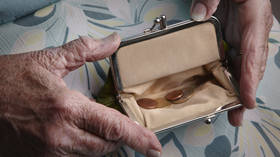Eurozone inflation rising
Consumer prices driven by food, drink and energy costs keep climbing across the single currency area
Eurozone inflation surged to 7% in April in the first increase in the last five months, data released by the European Union’s statistics office Eurostat on Tuesday showed.
Consumer prices rose from 6.9% in March, driven by food prices that soared 13.6% year-on-year last month. Food, alcohol and tobacco are expected to have the highest annual rate in April, followed by non-energy industrial goods, which picked up 6.2%.
Services climbed by 5.2% in April, compared with 5.1% the previous month. Energy prices were up again by 2.5% after a slight decline by 0.9% in March, according to the report.
Core inflation – excluding food and energy prices – declined from 5.7% in March to 5.6% in April. The figures are closely watched by European Central Bank policymakers, who will decide whether to continue raising interest rates to curb inflation when they meet on Thursday.
Latvia continues to struggle with the highest inflation at 15%, followed by Slovakia, Lithuania and Ireland — all dealing with a double-digit surge in consumer prices among the 20-member eurozone.
Inflation in Germany, the EU’s biggest economy, declined to 7.6% in April from 7.8% in March. In France, however, consumer prices rose 6.9% last month up from 6.7% in March, Eurostat said.
While the ECB has not committed to a new rate hike, the latest figures make it more likely, economists warn. The key deposit rate in the eurozone stands at 3%.
The International Monetary Fund (IMF) recently said that taming inflation while avoiding a recession was the biggest challenge the EU will face in the months to come.
For more stories on economy & finance visit RT’s business section
You can share this story on social media:








Comments are closed.